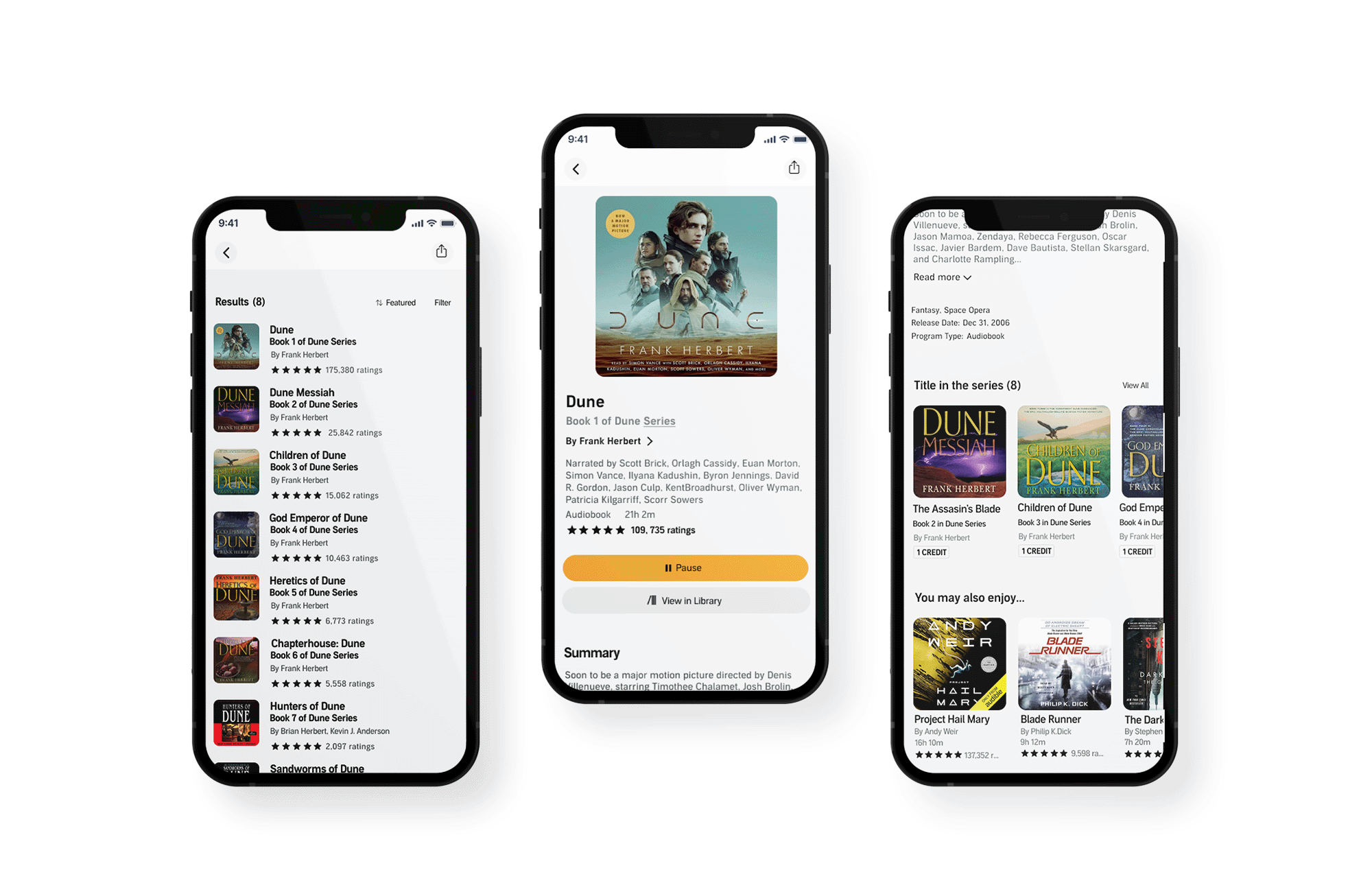
My project started when my partner, who loves using Audible, ran into a frustrating issue. He was reading a series and, following the app's suggestions, accidentally jumped from the first book to the fifth! He didn’t realize the mistake until he did a quick Google search. This mix-up showed us that Audible isn't great at showing the right order of books in a series. Seeing how this could annoy so many users, I decided to tackle this problem for my case study.
My main focus was on adding a feature that allows users to quickly and easily locate books within multi-volume series. After implementing the feature, I conducted tests to see how it impacted the overall user experience in terms of ease of use and satisfaction.
4 week time constraint and staying within Audible's brand guideline
Users of the Audible app have difficulty locating books within multi-volume series. Users cannot easily determine the correct reading order without relying on external sources.
I introduced a new feature allowing users to easily access all titles in a multi-volume series directly within the Audible app. This was necessary to eliminate the need for users to resort to external sources to determine the reading order, which often resulted in frustration and unnecessary delays in purchasing audiobooks.
I focused on how users interact with the Audible app, particularly how they search for, select, and listen to books in a series. I discovered that Audible doesn’t clearly display the order or titles of books in multi-volume series, making it difficult for users to know which book to read next. I uncovered this issue by auditing the app and reading through forums and Reddit communities where users expressed their frustrations.
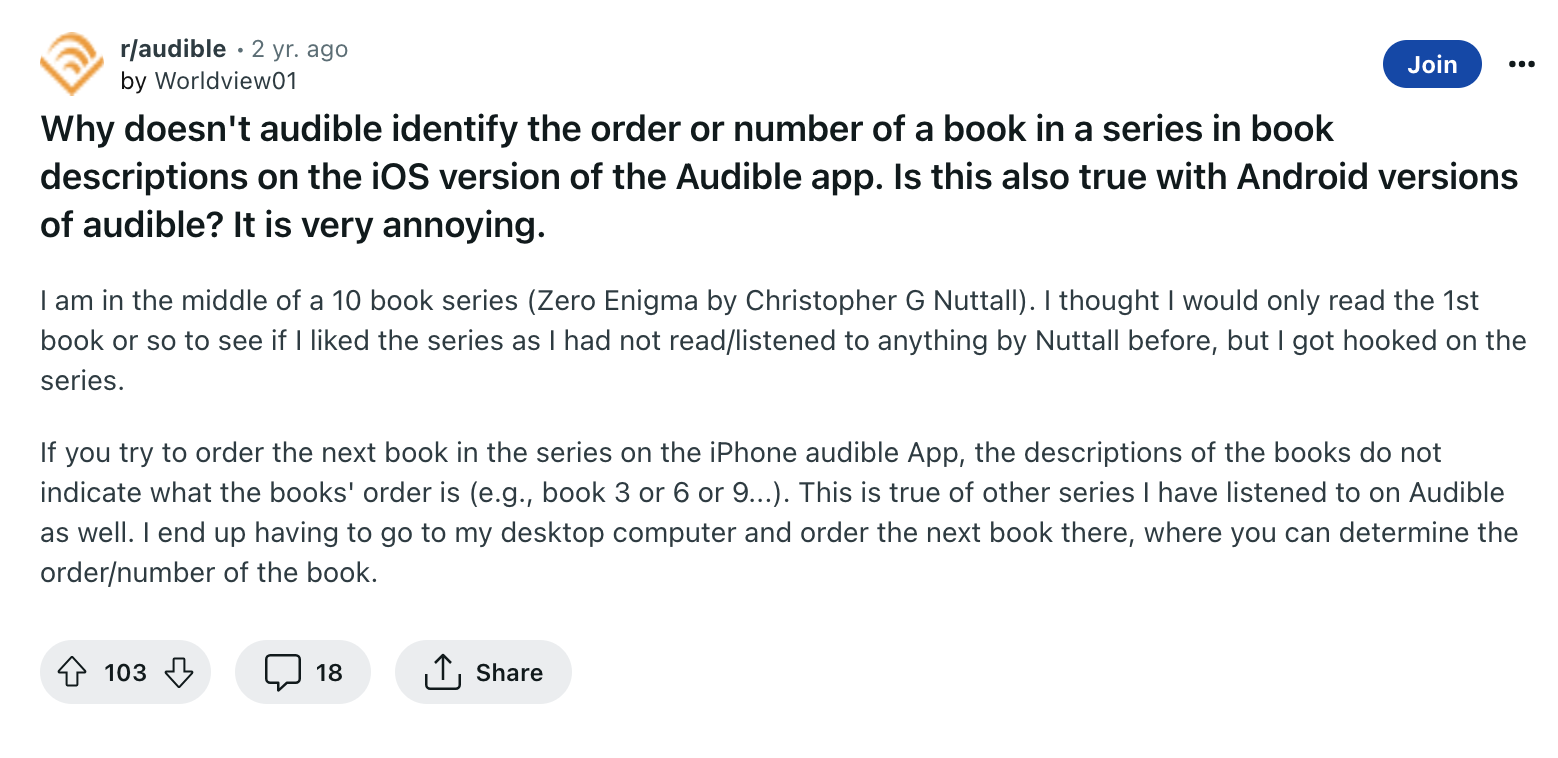



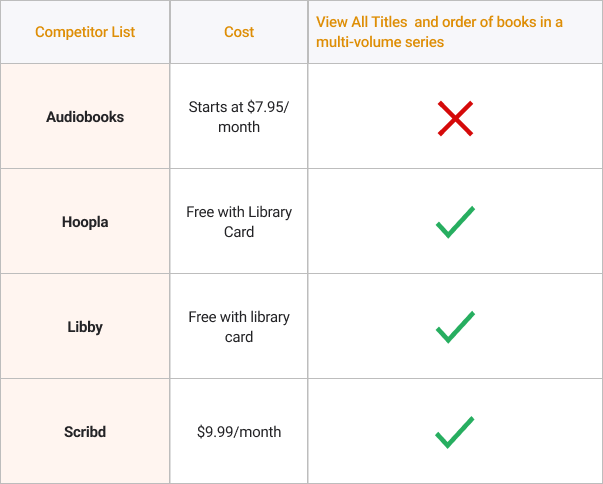
Competitive Analysis Chart
Next, I conducted an analysis of the search functionality within the Audible app, focusing specifically on whether the results displayed maintain the correct reading order and include the title number
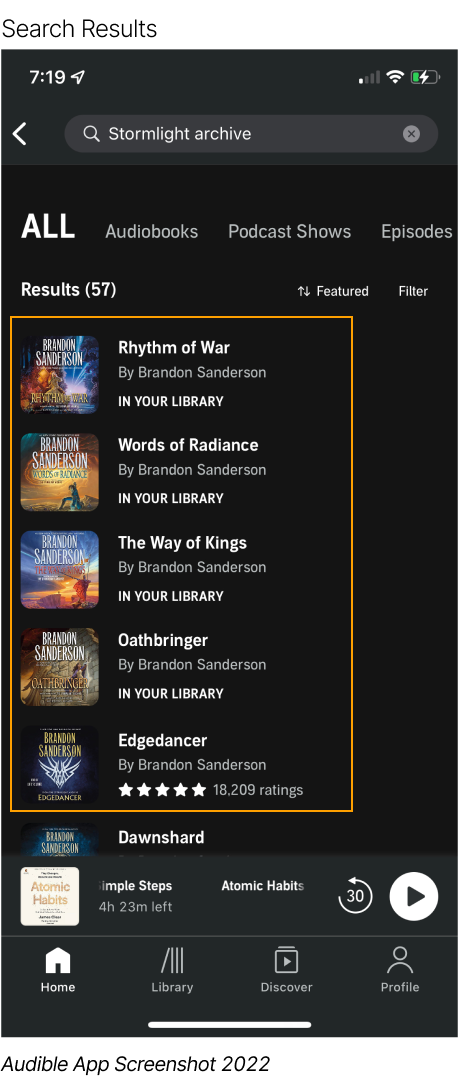
When a user searches for "Stormlight Archive" series in the Audible app, this is the exact result. For someone who is new to this series, there is no way to know which book to read first because the order of the books is not listed. This can be frustrating and confusing as it is not always clear how to discover other books in series within the app.
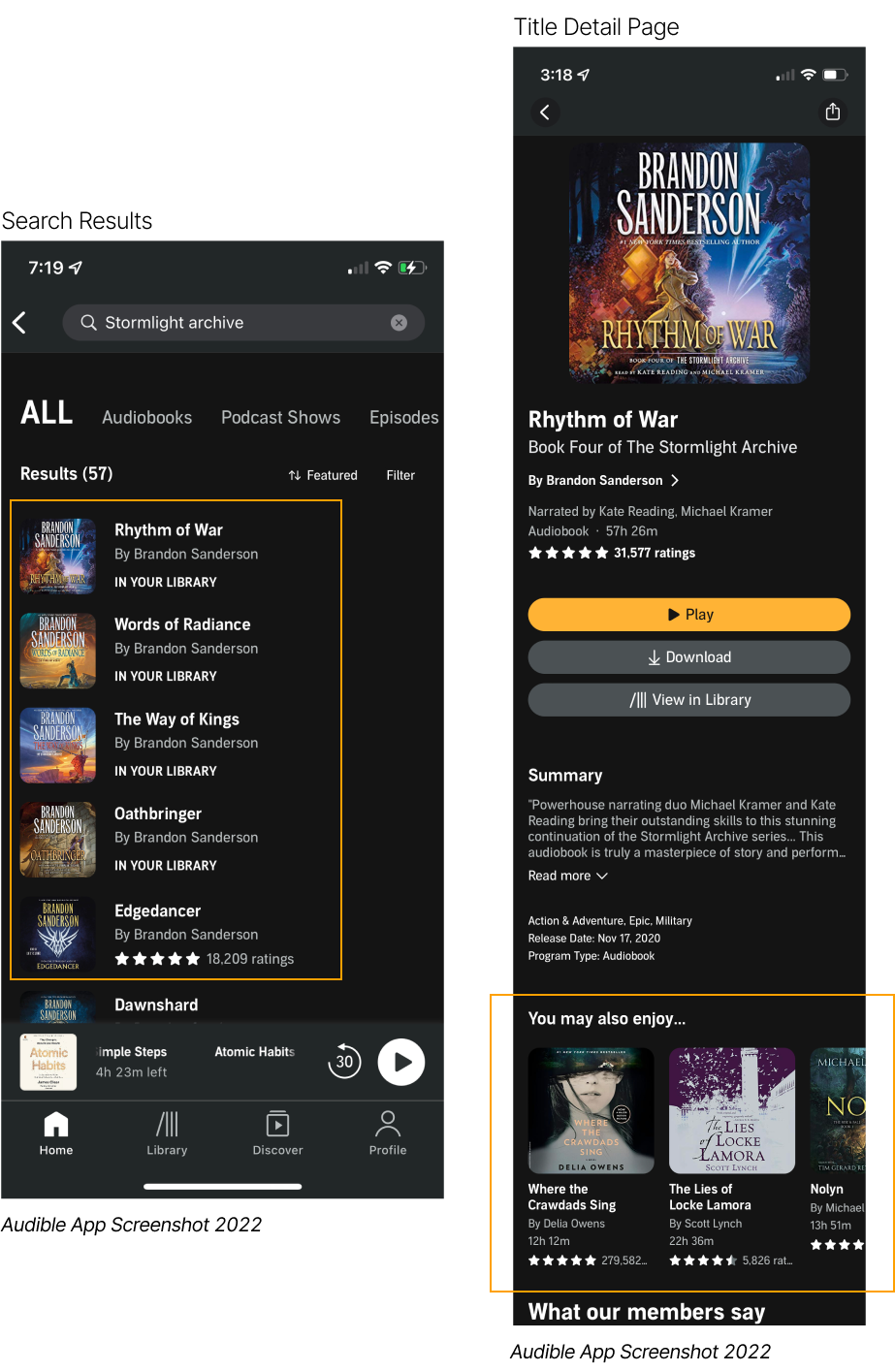
The search result displays the book "Rhythm of War" as the first option despite it being the fourth book in the series. Additionally, “You may also enjoy...” section on Title Detail Page, does not recommend or display other books in Stormlight Archive series.
To understand the different paths users might take to discover all the titles in a series, I took the step to create specific task flows. These task flows highlighted potential journeys users could embark on from various starting points within the app:
Homepage: Here, I focused on how a user would navigate from the homepage to discovering all the titles in a series
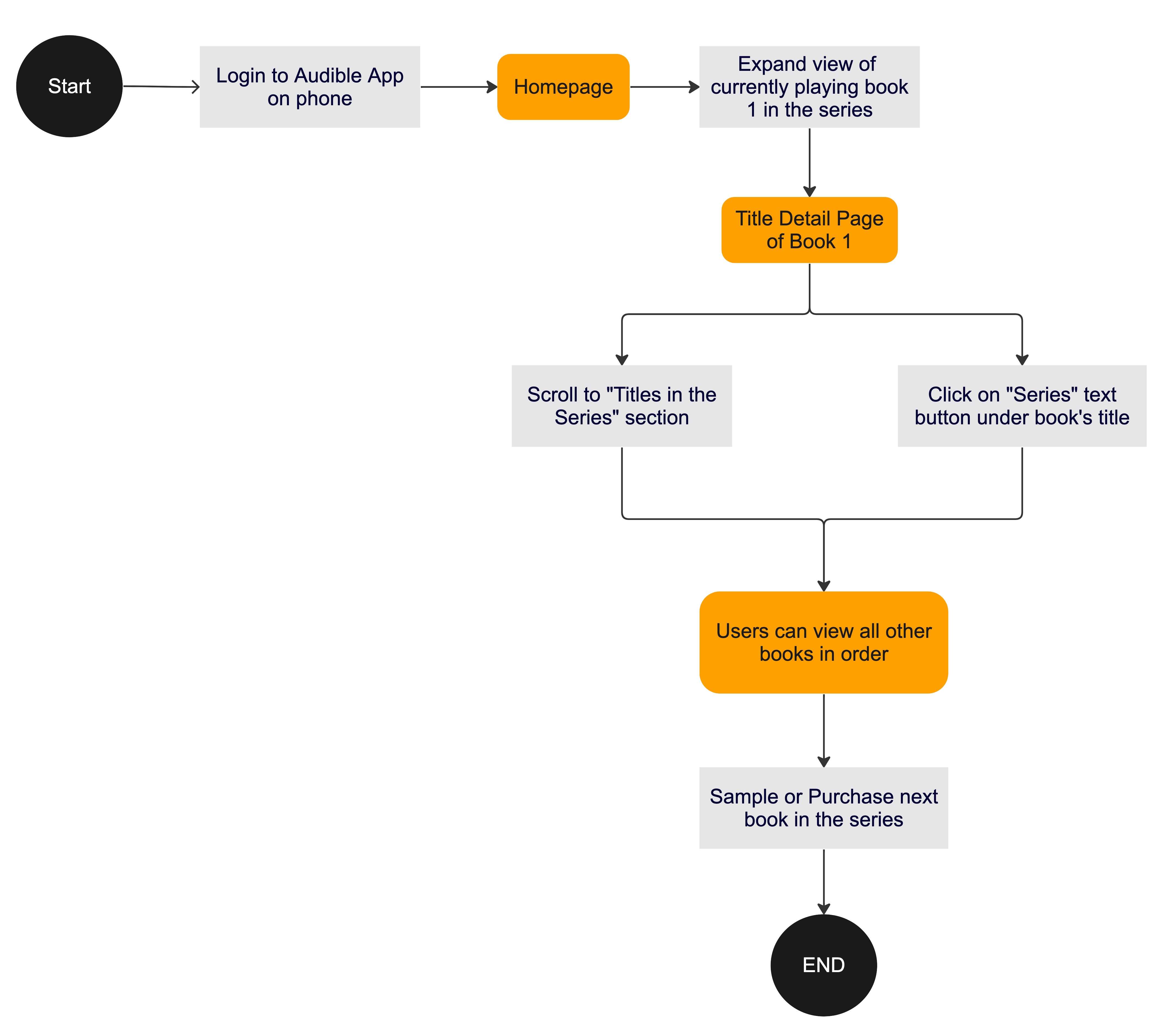
Title Detail Page: This flow shows how users can go from viewing a specific book title to finding all other books in the same series
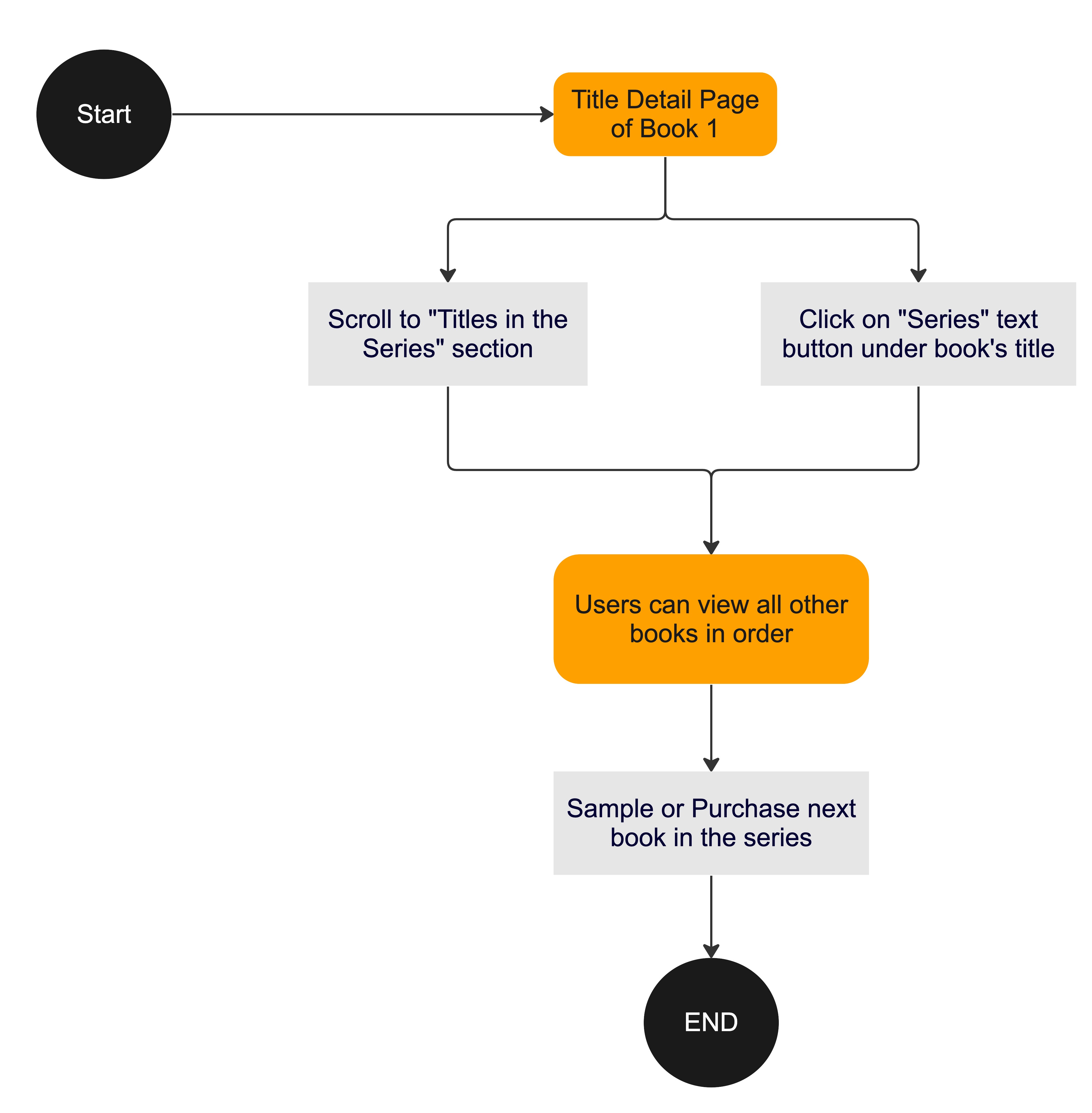
Rate and Review Page: After completing a book, users can access all other books in the series, including their respective order and numbering , through the Rate and Review page
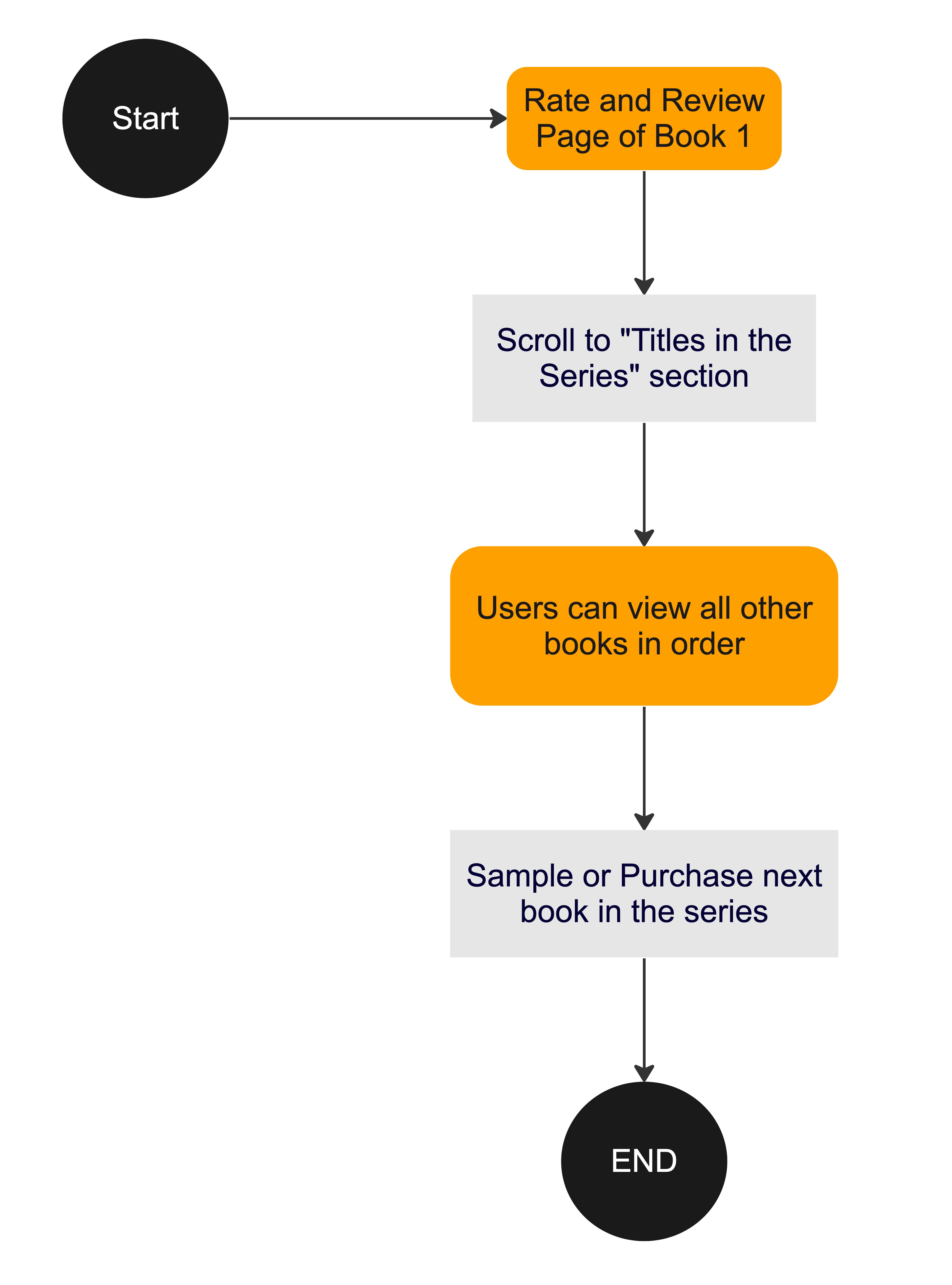
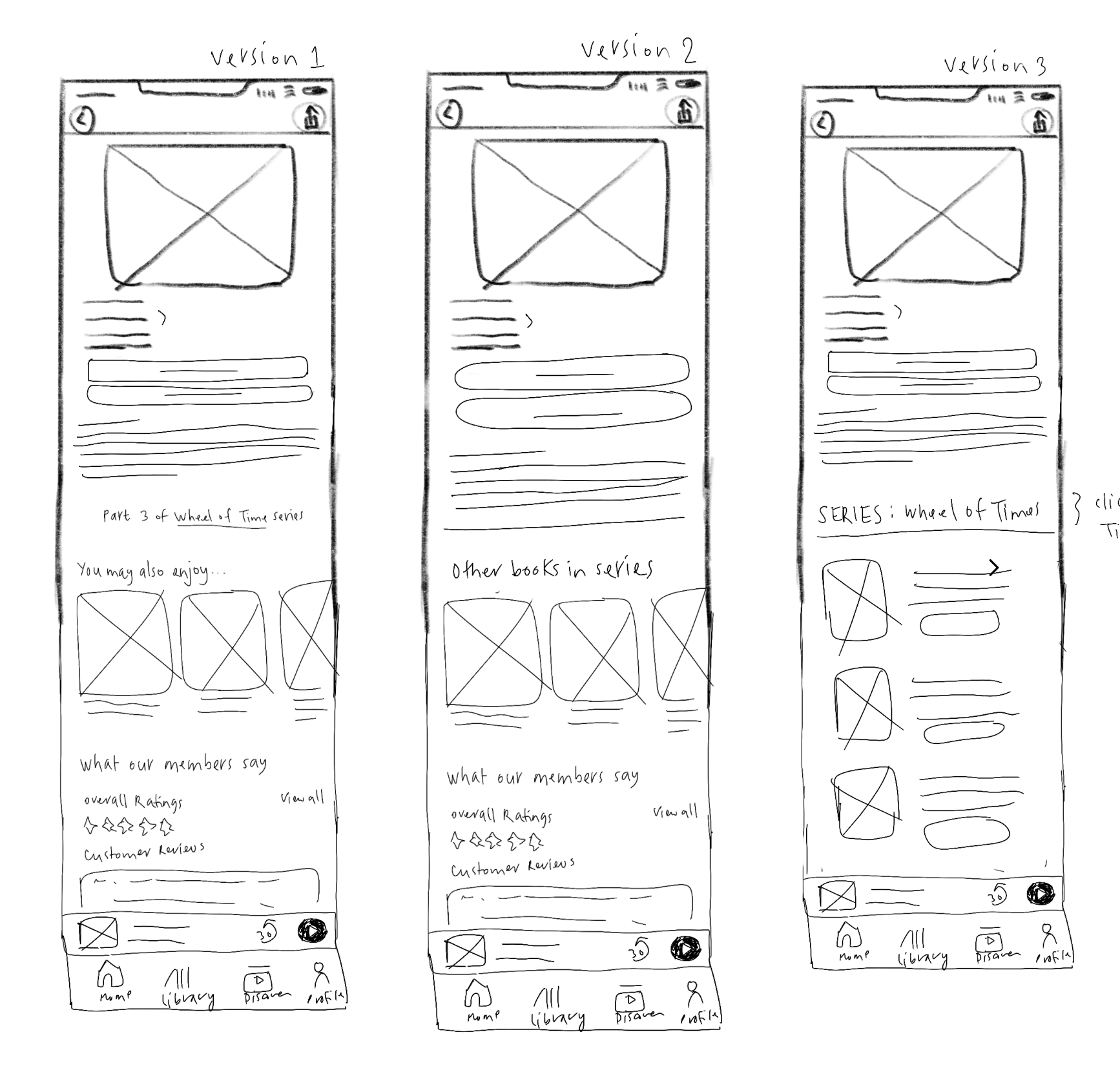
Low fi design of title detail page

In order to address this issue, I referred to current "Title Details Page" in the Audible app and designed three variations of the screen. After evaluating the advantages and disadvantages of each design, I chose Version 1 as the optimal solution as it adhered to Audible's original design while addressing the user's problem. The aim was to seamlessly incorporate the feature into the app to avoid user confusion.
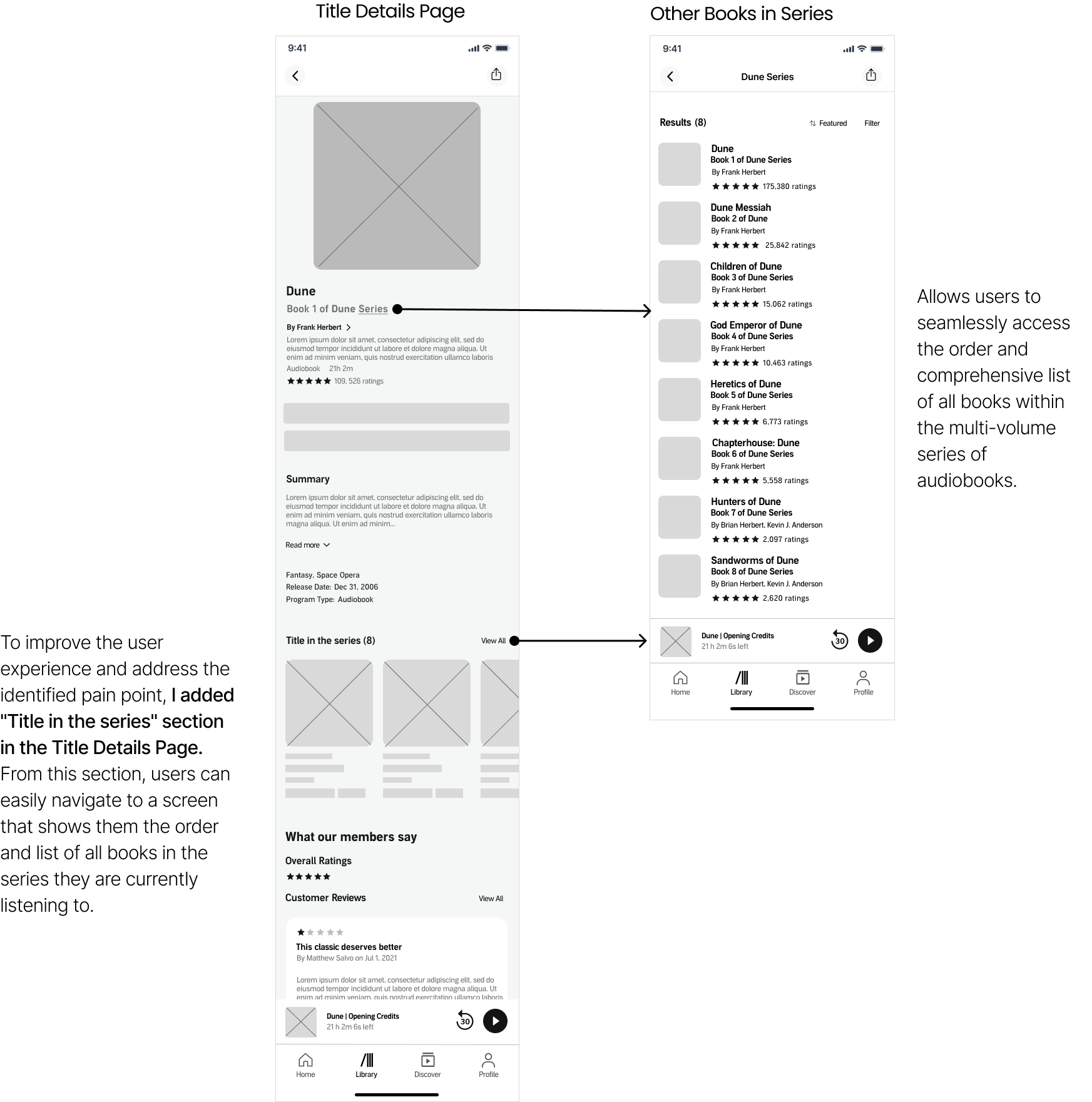
After sketching out some initial ideas, I referred to existing Audible design and create mid-fidelity wireframes in Figma. This allowed me to test out my design ideas in a more detailed and interactive format and make any necessary refinements before moving on to the high-fidelity prototype stage.
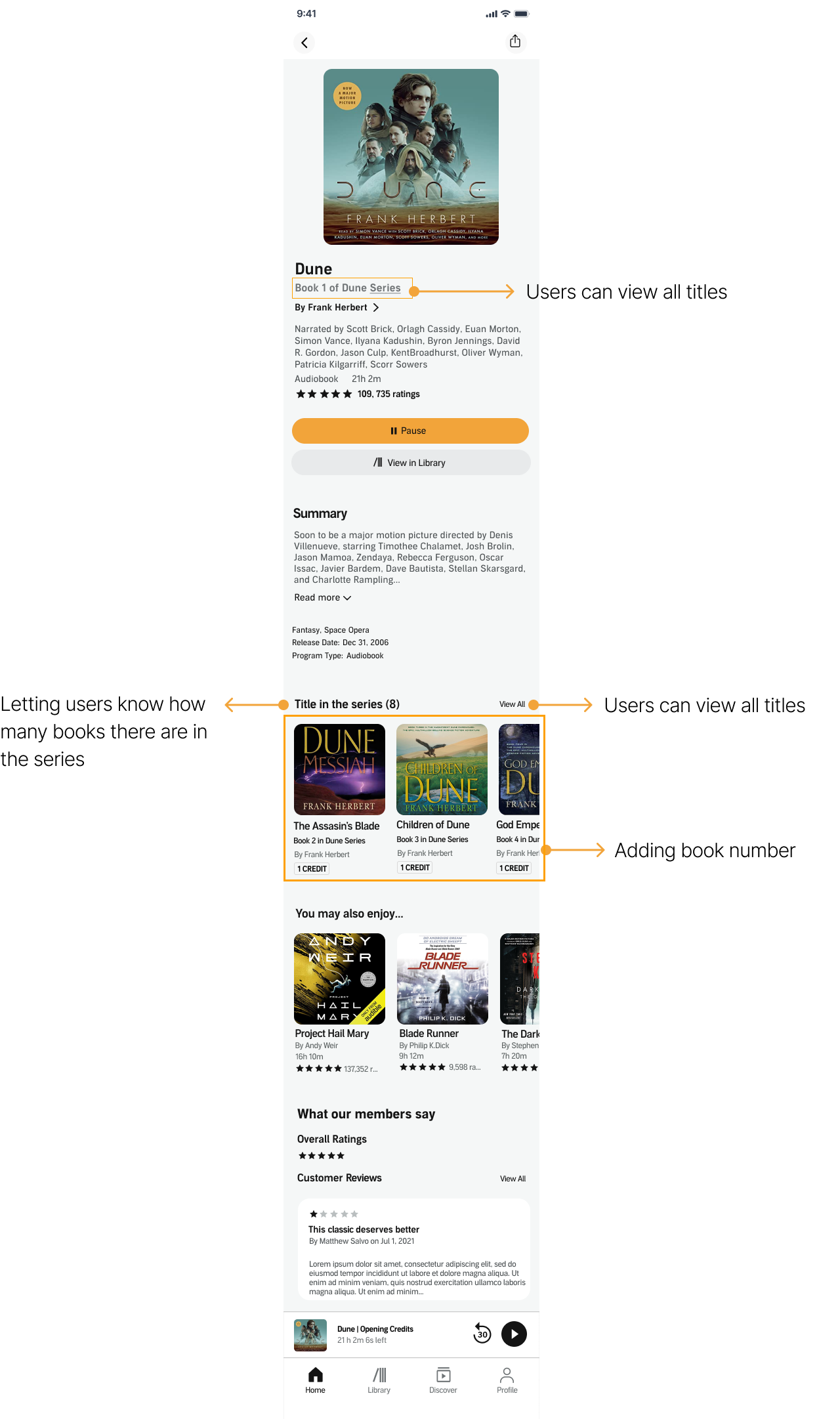
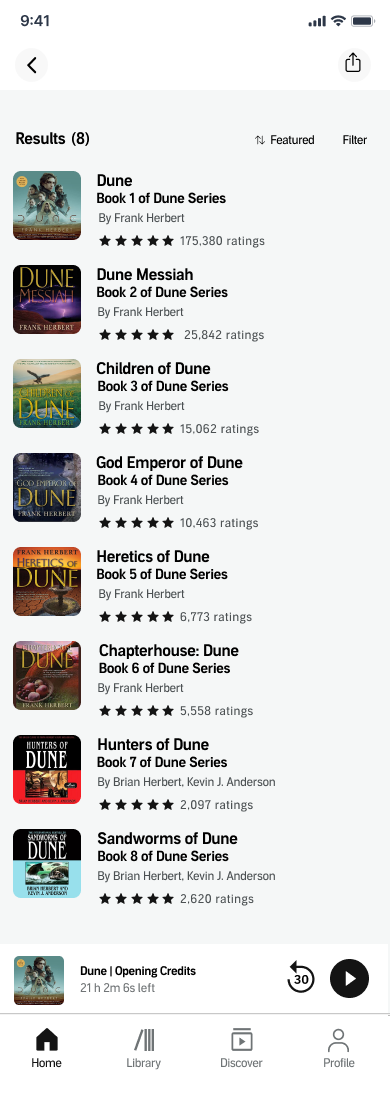
Series Order Tracking: I implemented this screen on the book detail page. When a book is part of a series, users can now see all other books in the series in the correct order.
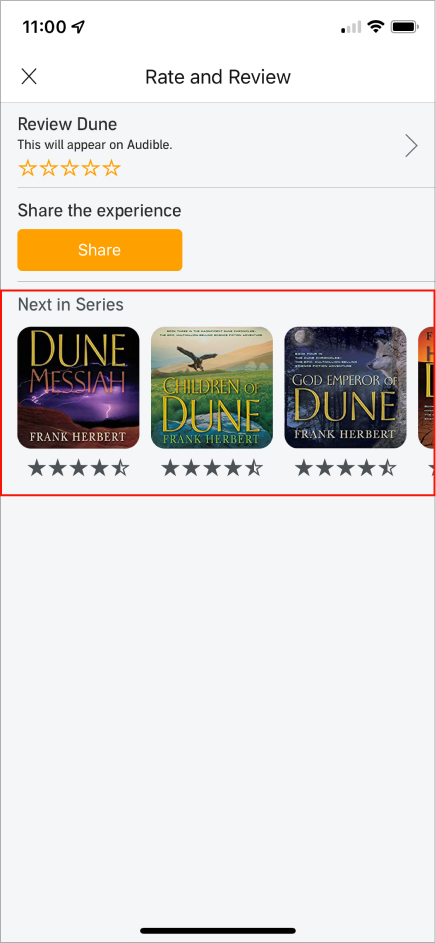
Audible App Screenshot 2022
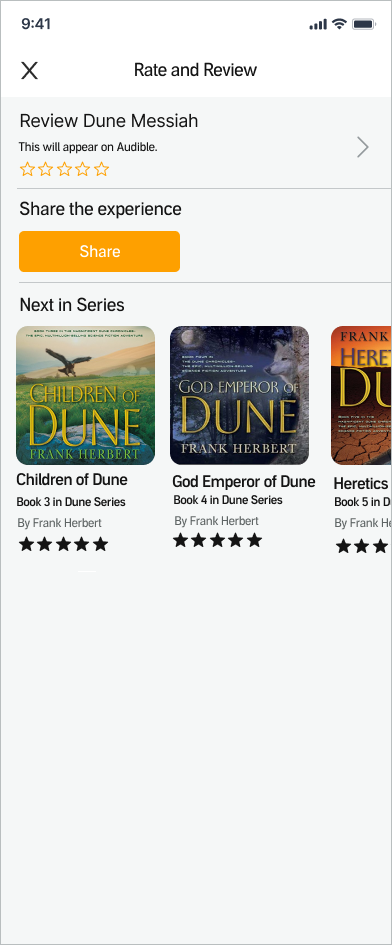
In order to improve discovery, I integrated title of the book and order number in Rate and Review screen of the app.
The final designs outline interactions across the Homepage, Title Detail Page, and Rate and Review Page, providing distinct paths for users to explore and access the series title.
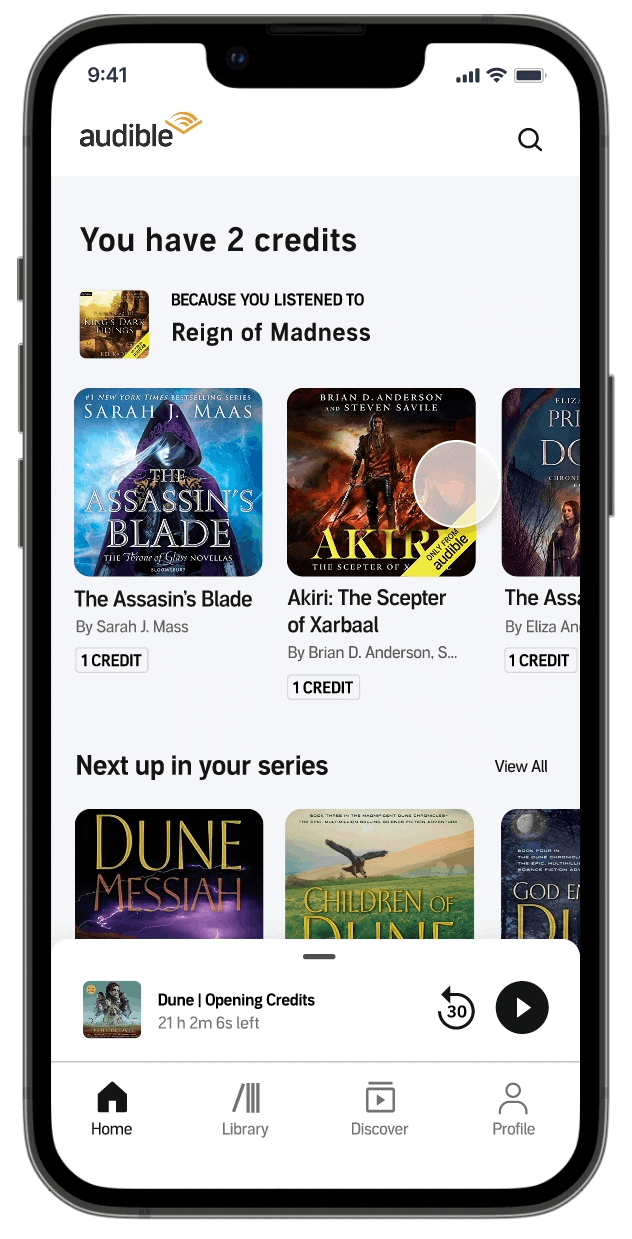
I implemented a 'Next up in Series' section on the Homepage, displaying the next book in the series the user is currently listening to
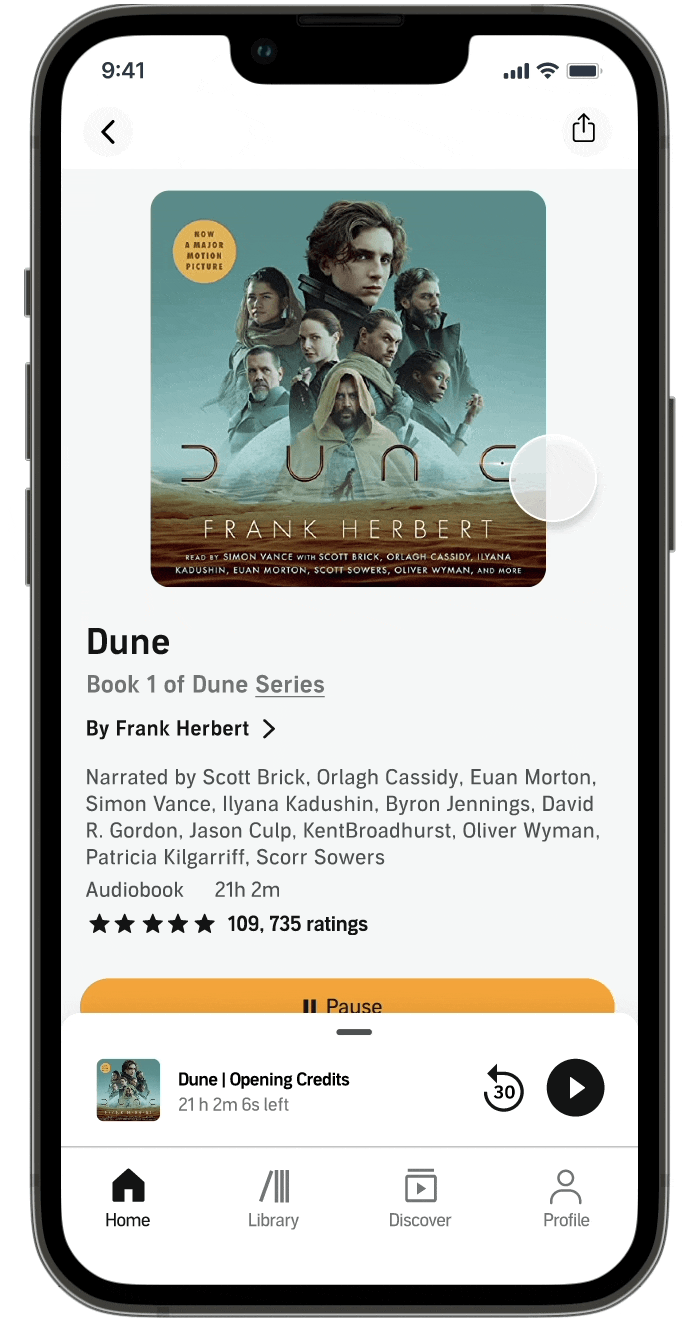
I integrated the feature into the Title Detail page, allowing users to view all books in a series with a single click
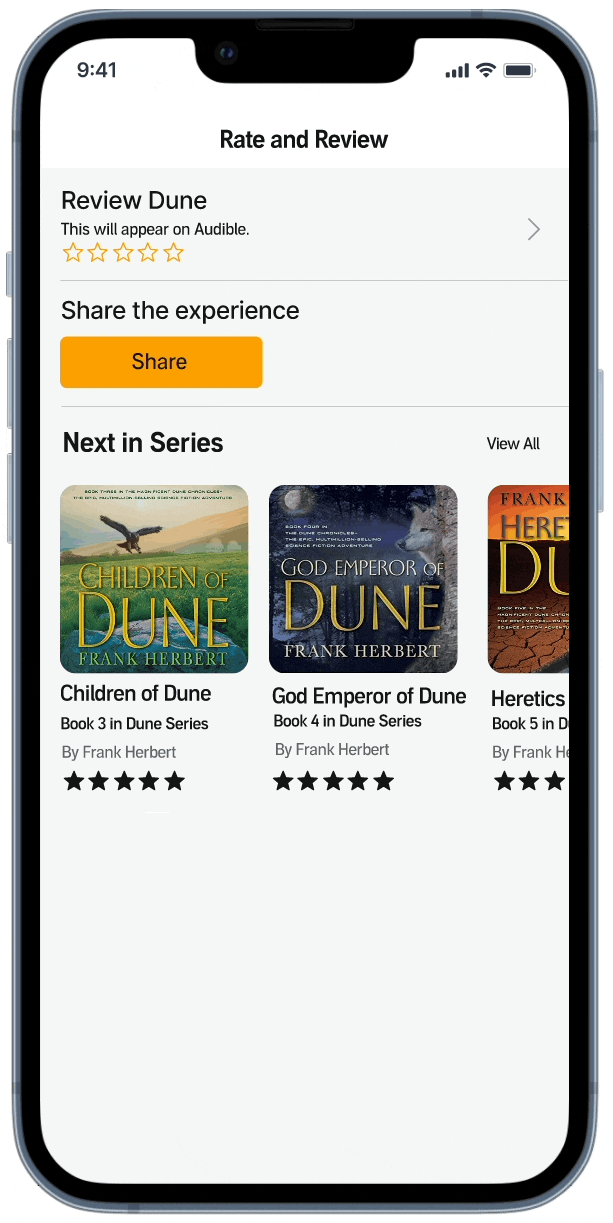
Users are now provided with information about the book's number and order on the Rate and Review page upon finishing the book, streamlining their experience and enhancing usability
I then created prototype to test with 5 users
To put my design solution to the test, I carried out usability tests using the Maze platform. Each of the five participants were active Audible subscribers with a history of listening to multi-volume series.
Task summary



Impact of new feature implementation was a significant decrease in task completion time
To establish a basis for comparison, I instructed the same participants to perform identical task, searching for "Stormlight Archive" series by Brandon Sanderson, but this time using the version of their own Audible app that doesn't include the new feature.

Time (sec) taken to complete task with and without feature
I began this project with the intention of adding a small feature to the Audible app, but during the design process, I realized that even a seemingly minor implementation can have a significant impact on the product as a whole. Initially, I was concerned that I would not have enough screens to test, but after receiving feedback from users, I learned that a solution does not need to be elaborate in order to be valuable. This experience highlighted the importance of user-centered design, as well as the value of incorporating user feedback into the design process to ensure that the final product aligns with user needs and preferences.